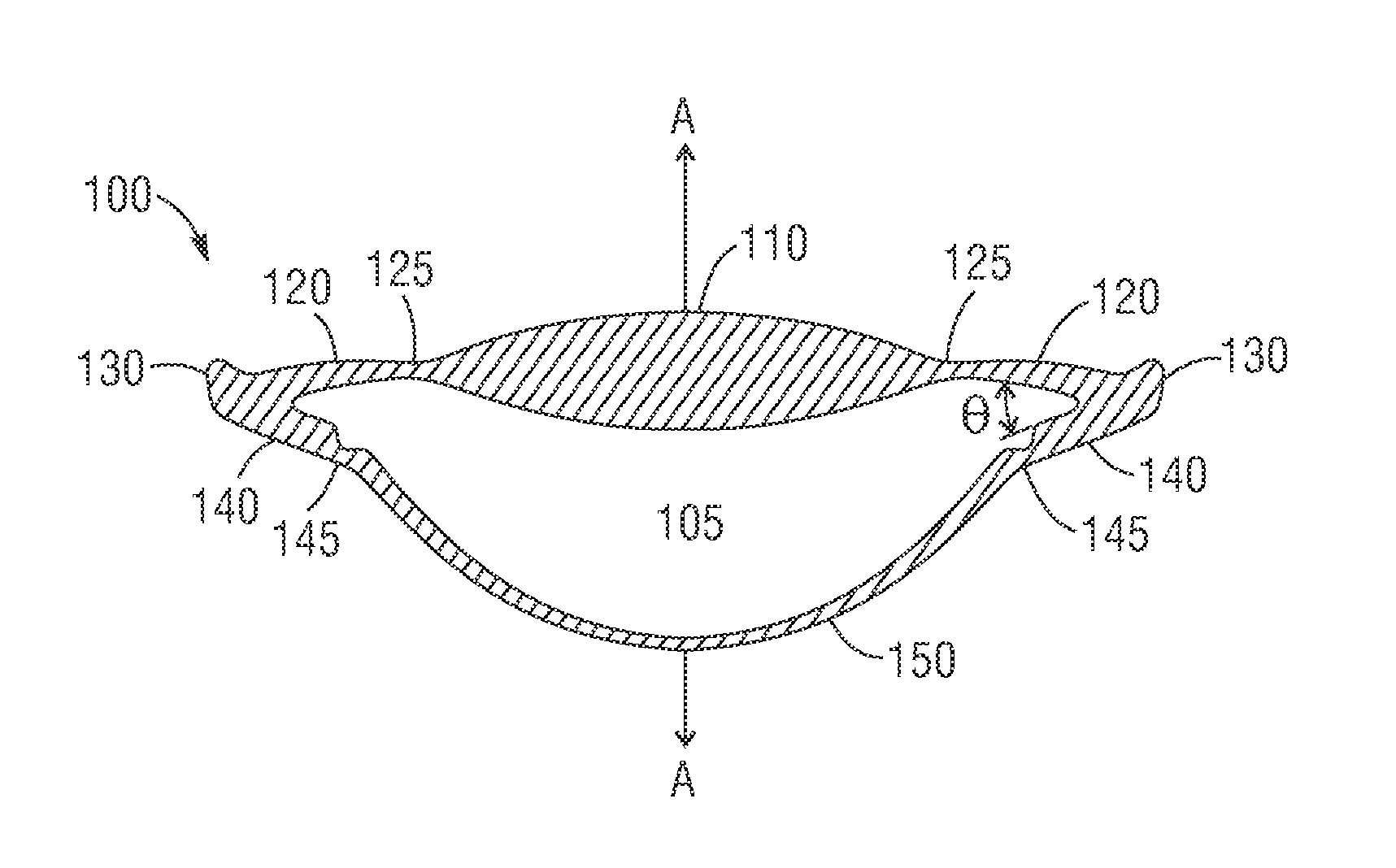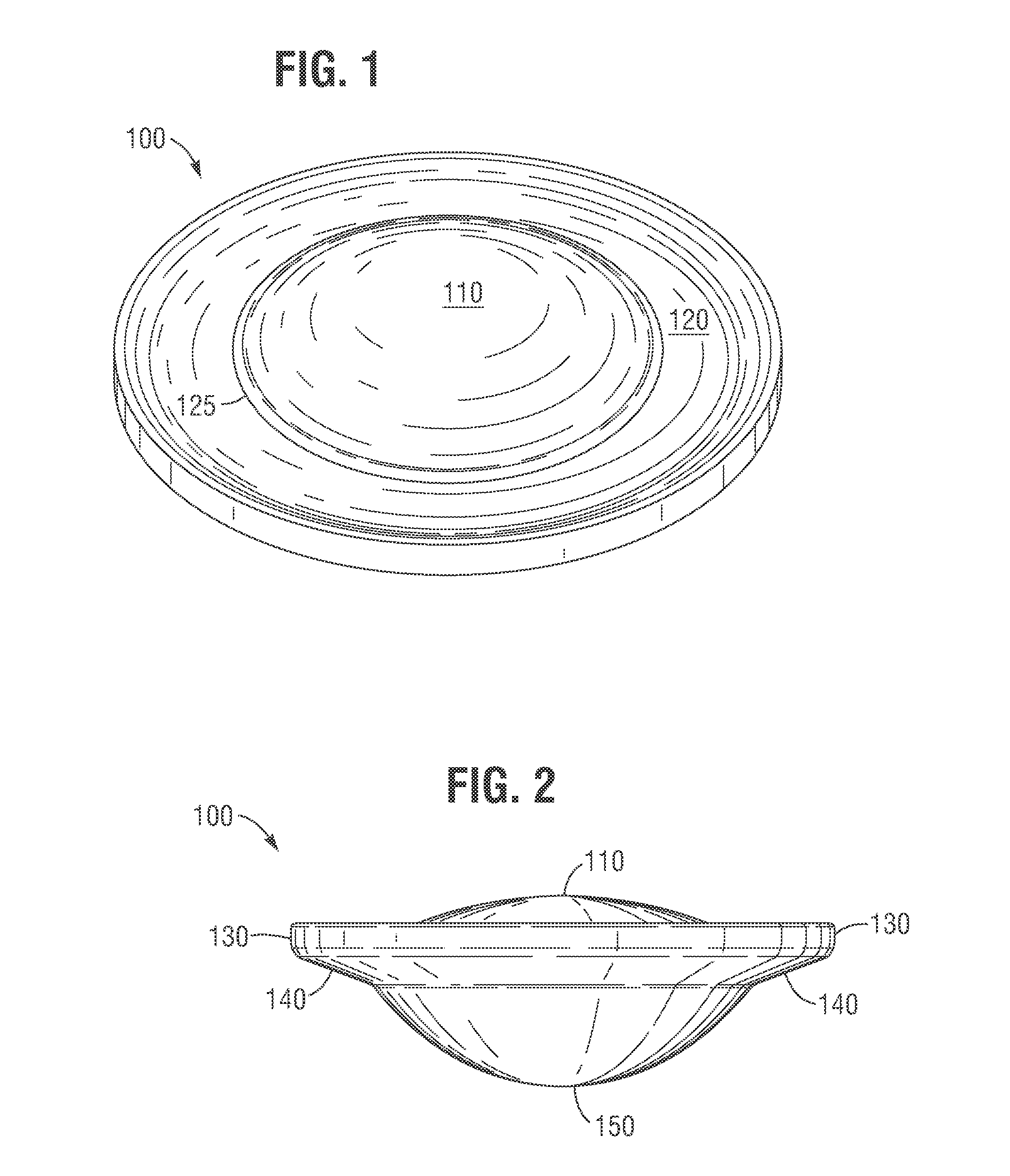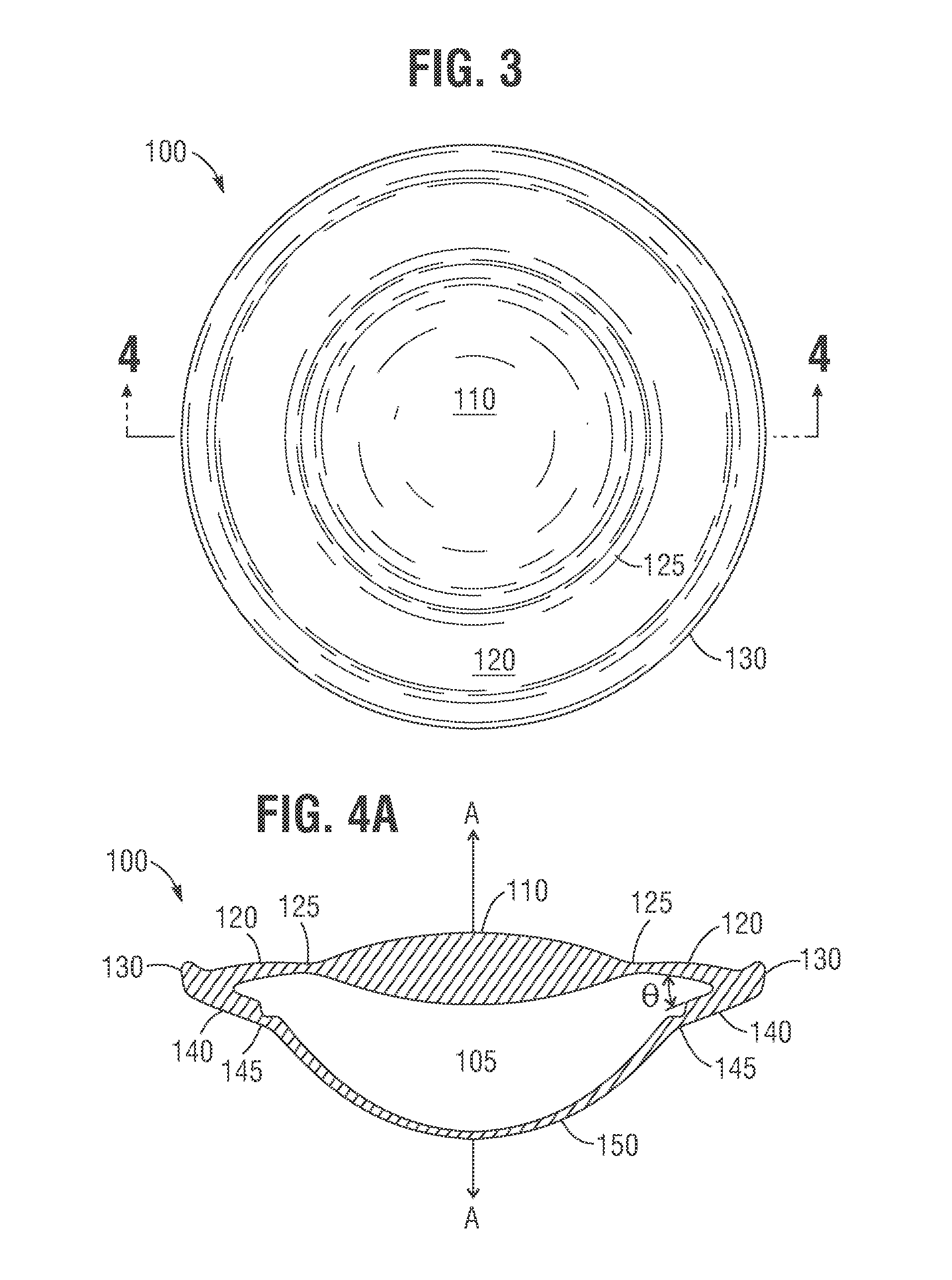Accommodating intraocular lens
a technology of intraocular lens and lens body, which is applied in the field of accommodating intraocular lens, can solve the problems of inability to correct presbyopia and reading glasses, inability to adjust, or change focus from near, and unmet need for effective surgical intervention to correct presbyopia, which cannot be treated, and achieves the effect of reducing thickness, reducing the radius of curvature, and increasing the curvature radius of flexible surfa
- Summary
- Abstract
- Description
- Claims
- Application Information
AI Technical Summary
Benefits of technology
Problems solved by technology
Method used
Image
Examples
Embodiment Construction
[0051]Specific, non-limiting embodiments of the present invention will now be described with reference to the drawings. It should be understood that such embodiments are by way of example and are merely illustrative of but a small number of embodiments within the scope of the present invention. Various changes and modifications obvious to one skilled in the art to which the present invention pertains are deemed to be within the spirit, scope and contemplation of the present invention as further defined in the appended claims.
[0052]FIGS. 1-4 illustrate a first set of embodiments of an accommodating IOL device 100 that may be implanted into the lens capsule 30 (see FIGS. 5 and 6) of the eye following cataract removal. The IOL device 100 is shown to comprise an anterior lens 110, a posterior surface 150 and an articulating member coupling the anterior lens 110 and the posterior surface 150 together. The articulating member is depicted as comprising an anterior member 120, a posterior m...
PUM
 Login to View More
Login to View More Abstract
Description
Claims
Application Information
 Login to View More
Login to View More - R&D
- Intellectual Property
- Life Sciences
- Materials
- Tech Scout
- Unparalleled Data Quality
- Higher Quality Content
- 60% Fewer Hallucinations
Browse by: Latest US Patents, China's latest patents, Technical Efficacy Thesaurus, Application Domain, Technology Topic, Popular Technical Reports.
© 2025 PatSnap. All rights reserved.Legal|Privacy policy|Modern Slavery Act Transparency Statement|Sitemap|About US| Contact US: help@patsnap.com



